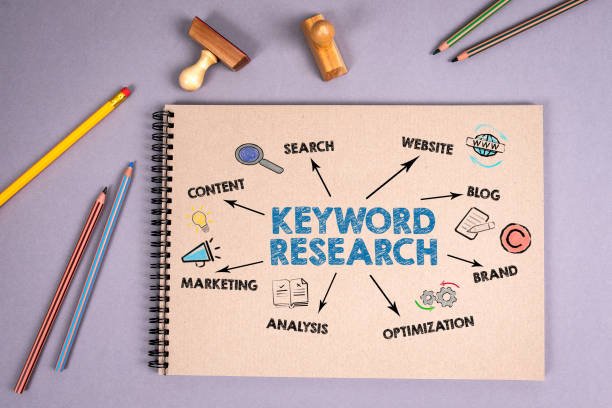Introduction
Headlines, or titles, play a central role in SEO Content. They are the first thing readers see and decide whether to click on the article or not. A good headline not only attracts readers but also remains relevant to search engines. In the world of SEO (Search Engine Optimization), a compelling headline is one that effectively uses keywords and piques users’ curiosity.
When developing headlines, it is crucial to understand your goal. Are you trying to drive traffic or increase user engagement? Headlines should be designed in a way that attracts not only search engines but also entices users. For this, you need to follow some basic principles that will help make your headlines SEO-friendly.
It’s also important to understand the preferences and search behavior of your target audience. If your headlines don’t match their interests and queries, they might not click on your content. Therefore, creating an impactful headline is critical to the success of your content.
Using Keywords

For SEO, it is essential to include keywords in headlines. Keywords are the words or phrases users type into search engines. If you include relevant keywords in your headlines, your content will rank higher in search engine results. However, it is also necessary to incorporate keywords in a natural and meaningful way, or your headline may appear spammy.
To create effective headlines, you need to understand your target audience’s search intent. Understanding what users are searching for and their queries will help you identify relevant keywords. Tools like Google Keyword Planner or SEMrush can assist you in identifying these keywords.
Keep in mind that overusing keywords can also be detrimental. If you stuff too many keywords into your headline, it can seem unnatural and affect the user experience. Therefore, a balanced and strategically placed use of keywords is necessary for the best results.
Using Emotional Appeal
To make headlines more engaging and compelling, you can also use emotional appeal. Emotional headlines attract readers and spark their curiosity. For example, if your content offers a solution to a problem, your headline can highlight this aspect.
For instance, instead of a bland headline like “Tips for Better Sleep,” a more engaging headline would be “Sleep Like a Baby: 7 Secrets for a Restful Night.” This headline uses an emotional trigger and makes readers feel like they are about to receive something valuable.
To create emotional headlines, you need to understand your audience’s needs and pain points. Once you grasp this, you can craft headlines that target their emotions and are more effective.
Using Numbers and Lists
Using numbers and lists in headlines is also an effective strategy. Numbers give readers an impression of specific and tangible information, and lists provide a structured and easy-to-read format. For example, “5 Ways to Improve Your SEO” or “10 Tips for Better Writing.”
The use of numbers in headlines gives readers a sense that the content will be organized and actionable. Lists also help readers quickly scan the content and feel they are receiving clear and concise information.
This technique is especially useful in SEO content as it increases user engagement and improves click-through rates. Including numbers and lists in effective headlines can enhance your content’s visibility and attractiveness.
Maintaining Clarity and Simplicity

Maintaining clarity and simplicity in headlines is also important. Complex and confusing headlines can distract readers and cause them to lose interest. Clear and straightforward headlines quickly tell readers what your content is about and what value it provides.
You should ensure that your headline is easily understandable and free of unnecessary jargon. Using simple and clear language makes it easier for readers to understand and attracts them. For example, instead of “Comprehensive Guide to Enhancing Your Online Presence,” a simpler headline like “Boost Your Online Presence with These Simple Tips” is more effective.
Maintaining clarity and simplicity can also improve your content’s click-through rates and make it easier for users to comprehend.
Action-Oriented Headlines
Action-oriented headlines are also compelling and engaging. This type of headline encourages readers to take direct action. For example, “Start Boosting Your Sales Today” or “Discover the Secrets to Better Health Now.”
Action-oriented headlines use strong action verbs that motivate readers and inspire them to click on the content. These headlines make your content dynamic and engaging and increase user interaction.
You should ensure that action verbs align with your content’s objectives and provide clear direction to readers. Effective action-oriented headlines help readers actively engage with your content.
Highlighting Unique Selling Proposition (USP)

Highlighting your content’s unique selling proposition (USP) in headlines is also important. The USP differentiates your content and tells readers what unique value your content offers.
Including the USP in your headline can give your content a competitive edge and convince readers that your content is valuable to them. For example, instead of “Learn SEO Basics,” a headline like “Master SEO in Just 30 Minutes a Day” highlights the unique benefit of quick learning.
Effectively communicating the USP makes your headlines more appealing and relevant, distinguishing your content.
Following SEO Trends and Updates
Following SEO trends and updates also plays an important role in crafting headlines. Search engine algorithms and user behavior change from time to time, and these changes can impact your headlines.
You should stay updated with SEO trends and updates and adjust your headlines accordingly. For example, if Google makes changes to its search algorithm, it is essential to align your headlines with these changes.
By regularly following SEO blogs and industry news, you can ensure that your headlines comply with search engine standards and reflect current trends.
Using A/B Testing and Analytics
Using A/B testing and analytics to measure headline effectiveness is also crucial. A/B testing involves testing two different headlines to see which one performs better. Analytics tools provide data on which headlines generate more clicks and engagement.
This process allows you to track your headlines’ performance and make necessary adjustments. This data-driven approach helps you understand how your headlines are performing and where improvements are needed.
Regular testing and analytics enable you to continuously optimize your headlines and enhance the overall effectiveness of your content.
-
Practice and Experimentation
Lastly, practice and experimentation are essential in headline crafting. To create effective headlines, you need to continuously practice and experiment. Trying different styles, formats, and techniques helps you understand what works and what doesn’t.
You should also observe how your audience responds and how your headlines engage them. In this process, you will receive feedback and insights that will help you improve and create better headlines.
Headline crafting is an ongoing process, and you need to maintain a mindset of continuous improvement and adaptation.





